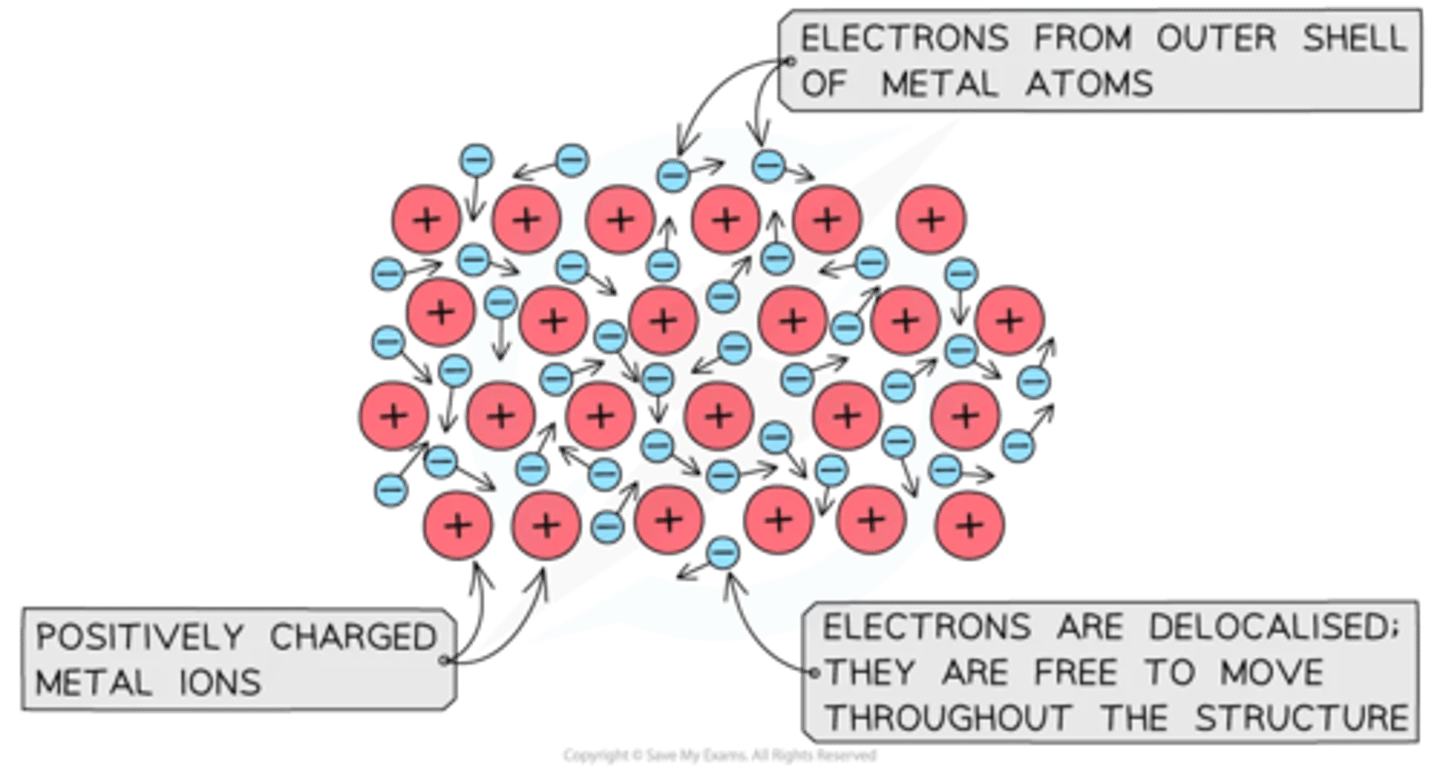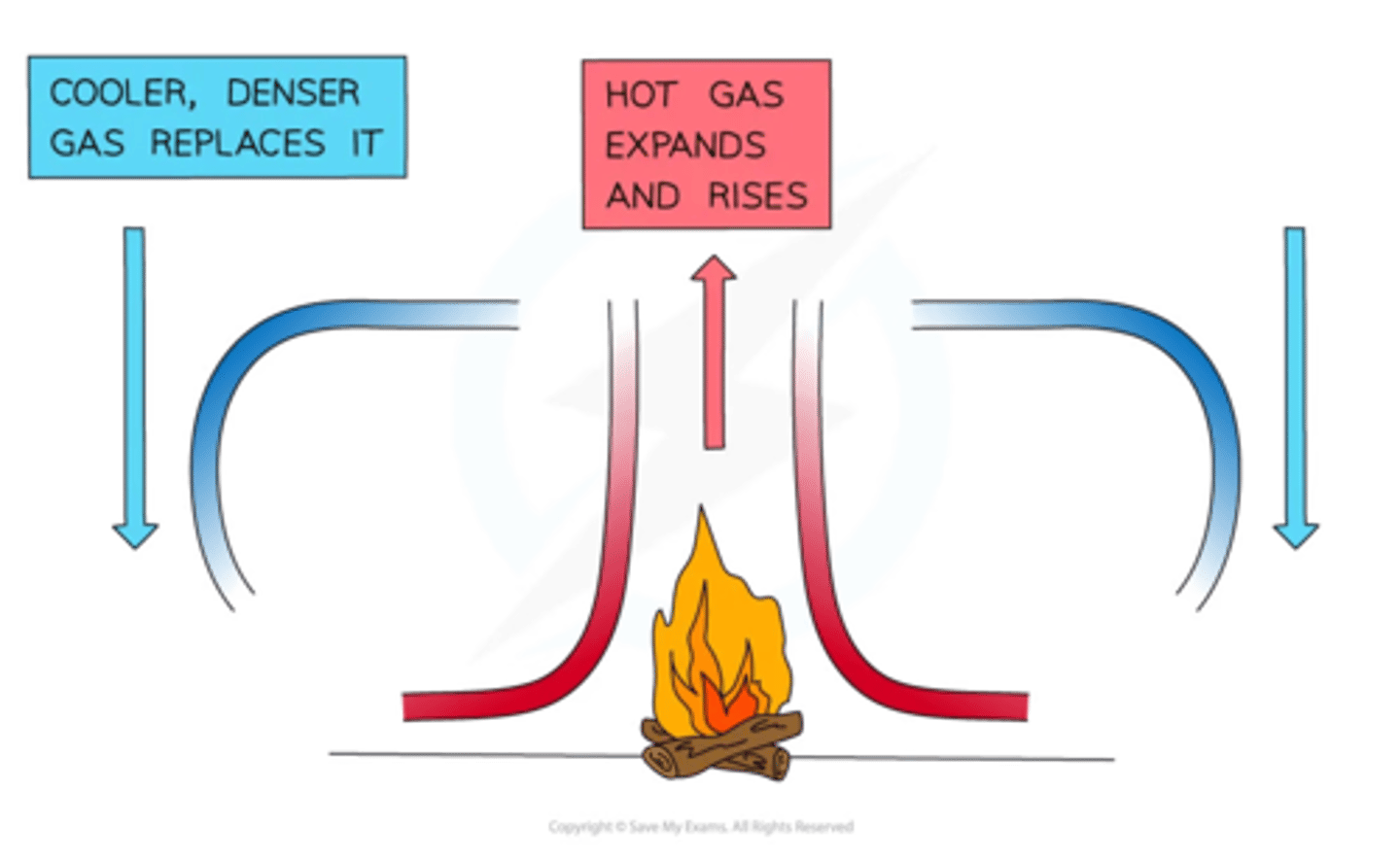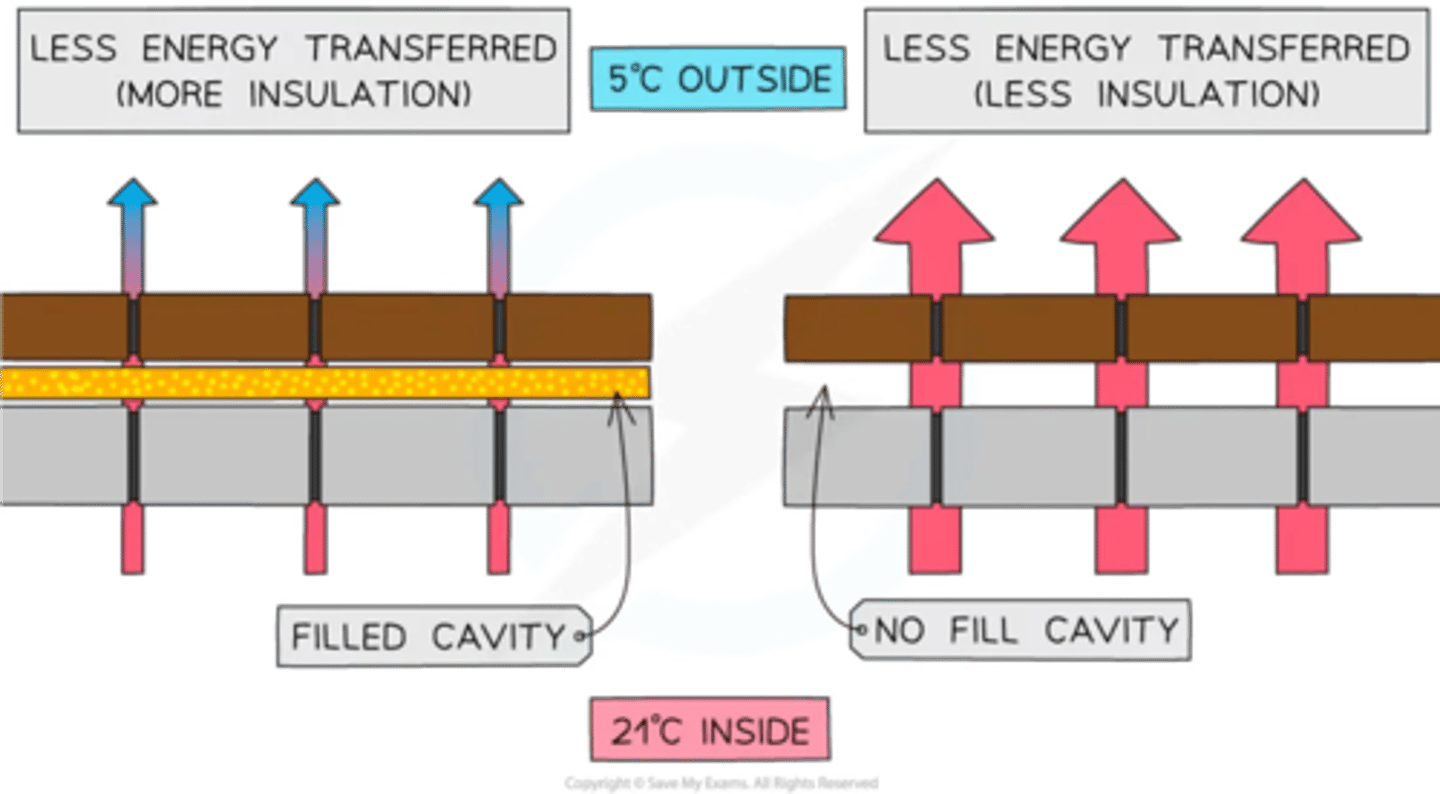4b - Convection and efficiency
1/9
There's no tags or description
Looks like no tags are added yet.
Name | Mastery | Learn | Test | Matching | Spaced |
|---|
No study sessions yet.
10 Terms
Conduction
The direct transfer of heat from one substance to another substance that it is touching through vibrating atoms

Factors affecting conduction
As an atom is heated up they vibrate more meaning more collisions occur, transfers energy from one to another. Materials are good at conducting heat as delocalised electrons can collide with atoms helping more collisions

What is an insulator
Does not conduct well which makes it a good insulator to prevent energy leakage and transfer by conduction
Convection
Main way energy is transferred in liquids and gasses, Convection cannot occur in solids
Convection currents
When a liquid or gas is heated, molecules push each other apart making the fluid expand which makes hot fluid less dense than surroundings, Hot fluid rises and cooler fluids move in to take its place. Eventually the hot fluid cools and contracts and sinks back down as it is more dense

Thermal Radiation
All objects emit radiation, the hotter the object the more infrared radiation is released
Factors affecting Thermal Radiation
The colour of the object - Matte black absorbs and emits more radiation. Glossy white objects are the worst at emitting and absorbing thermal radiation as they reflect.
Reducing energy loss
Insulators are used to prevent energy loss, it prevents convection currents and the fluid from moving.
Insulation
Reduces energy transfers from both convection and conduction and the effectiveness of a material can vary
Factors affecting insulation
- lower thermal conductivity the less energy is transferred
- Less dense, the further apart the particles are, hardy for energy to transfer
- Thickness, The thicker the better
- Trapped air, air is a poor conductor fibres can trap air which makes them good insulators
